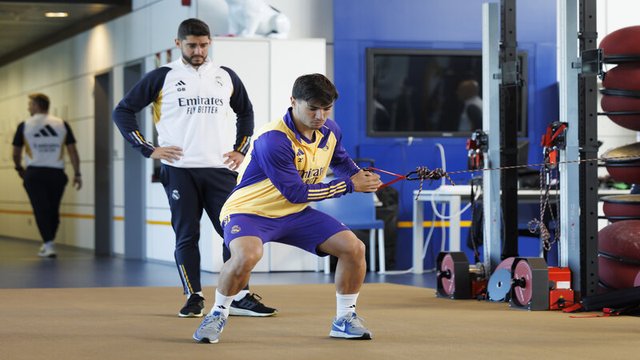
Conditioning in football is not merely about physical fitness; it's a strategic approach to maximizing a player's potential on the field. In a game where split-second decisions and peak physical performance can make all the difference, conditioning in football serves as the cornerstone of success for footballers.
In this post, we’ll delve deeper into what conditioning entails, its significance in today's football world, the nuances between pre-season and in-season conditioning, the pivotal role of nutrition, and the individuals entrusted with the responsibility of conditioning in football teams, and what sort of educational background they may have, such as a Master in Football Coaching, Online Sports Coaching Course, Online Masters in Sports Performance, or Master High Performance Sport.
Conditioning in football encompasses the physical, mental, and tactical preparation of players to meet the demands of the sport.
It involves developing endurance, strength, agility, speed, and flexibility tailored to the specific requirements of football. Conditioning drills simulate game scenarios, aiming to enhance performance while reducing the risk of injury.
Additionally, it includes mental conditioning to sharpen focus, decision-making, and resilience on the field.
In contemporary football, where the pace of the game is faster than ever, and the margins of victory are razor-thin, optimal conditioning is non-negotiable. Well-conditioned players can maintain high levels of intensity throughout the match, execute tactics effectively, and recover quickly between games.
Moreover, conditioning contributes to injury prevention, prolonging players' careers and ensuring team consistency over a gruelling season.
Navigating the different phases of conditioning in football is crucial for optimising player performance and ensuring sustained success throughout the season. Understanding the distinctions between pre-season and in-season conditioning allows teams to tailor their training programmes effectively, maximising physical readiness and tactical preparedness.
The following are some of the key elements of pre-season and in-season conditioning:
Nutrition plays a pivotal role in football conditioning, serving as fuel for optimal performance and recovery. Carbohydrates provide the energy required for high-intensity activities, while proteins aid in muscle repair and growth.
Adequate hydration is also crucial for maintaining performance levels and preventing fatigue. Nutrient timing, including pre-match meals and post-match recovery nutrition, is carefully planned to optimize performance and reduce the risk of injury.
Conditioning in football is typically overseen by specialised fitness coaches or sports scientists with expertise in exercise physiology, biomechanics, and nutrition. These professionals often hold degrees in sports science or related fields.
They design and implement comprehensive conditioning programmes tailored to the needs of individual players and the team as a whole. Successful candidates for these roles often have experience working with elite athletes and a track record of achieving measurable improvements in performance and injury prevention. Additionally, they stay abreast of the latest research and developments in sports science to continually refine their conditioning methodologies.
Conditioning is an integral component of modern football, encompassing physical, mental, and nutritional aspects to maximise players' potential on the field. Whether it's pre-season preparation or in-season maintenance, effective conditioning programmes are essential for success in the highly competitive world of football. Through strategic planning, tailored training regimens, and optimal nutrition, football teams can ensure that their players are primed for peak performance when it matters most.